#early buddhism
Photo

The Quest for Buddhism (94)
Buddhist cosmology
Origin of the concept
The Buddhist cosmology as presented in commentaries and works of Abhidharma ('Study on the Dharma', 3rd century BCE and later) in both Theravada and Mahayana traditions, and is the end-product of an analysis and reconciliation of cosmological comments found in the Buddhist sutras and vinaya traditions.
No single sutra sets out the entire structure of the universe, but in several early Buddhist sutras, the Buddha describes other worlds and states of existence, as well as the origin and destruction of the universe.
The order of the planes are found in various discourses of Gautama Buddha in the Sutta Pitaka. In the Saleyyaka Sutta of the Majjhima Nikaya the Buddha mentioned the planes above the human plane in ascending order. In several suttas in the Anguttara Nikaya, the Buddha described the causes of rebirth in these planes in the same order.
The synthesis of these data into a single comprehensive system must have taken place early in the history of Buddhism.
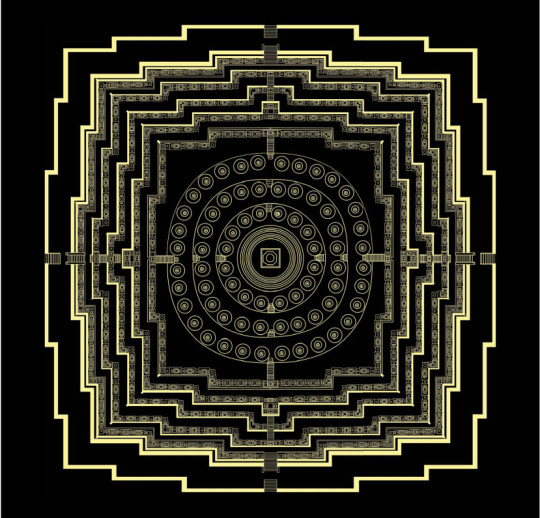
仏教の探求 (94)
仏教の宇宙論
コンセプトの由来
パーリ仏教 (巴: テーラワーダ)と大乗仏教 (だいじょうぶっきょう、梵: マハーヤーナ)の両方の伝統における阿毘達磨 (あびだつま、梵: アビダルマ、紀元前3世紀以降の『ダルマの研究』)の解説書や著作に見られる仏教の宇宙論は、仏教の経典や律 (りつ、巴:梵: ヴィナヤ)の伝統に見られる宇宙論の記述を分析・調整した最終成果論である。
特に宇宙の全構造について示した経典はないが、数々の初期仏教の経典の中で、ブッダが他の世界や存在状態について述べており、また宇宙の起源と破壊についても述べている。
平面シートの順序は、『経蔵 (きょうぞう、巴: スッタ・ピタカ)』の中で、ブッダの様々な説話に見られる。『中部 (ちゅうぶ、巴: マッジマ・ニカーヤ)』のサトレヤカ・スッタでは、ブッダは人間の面より上層部の面を昇順に述べている。増支部(ぞうしぶ、巴: アングッタラ・ニカーヤ)の経典の数カ所では、ブッダがこれらの平面シートにおける輪廻転生の原因を同じ順序で述べている。
これらのデータが単一の包括的体系に統合されたことは、仏教史の初期に起こったと考えられる。
#buddhist cosmology#buddha#buddhism#pali cannon#early buddhism#abhidharma#sutta pitaka#majjhima nikaya#theravada buddhism#mahayana#vinaya#spatial cosmology#parallel worlds#universe#nature#art#rebirth#bodhisattva
128 notes
·
View notes
Text
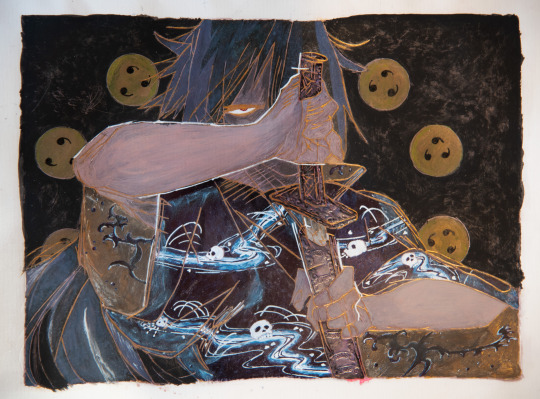
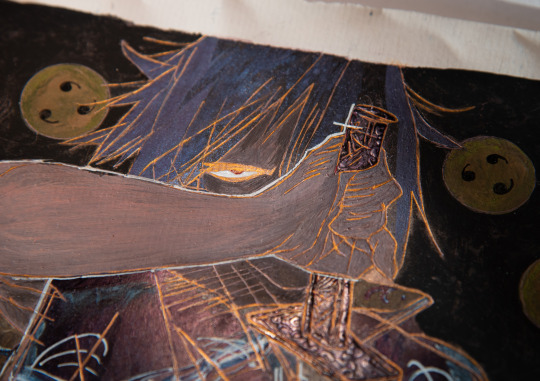
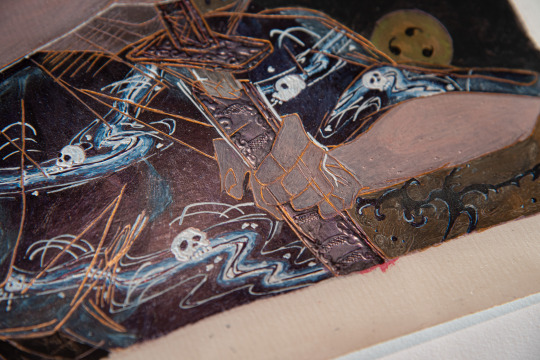
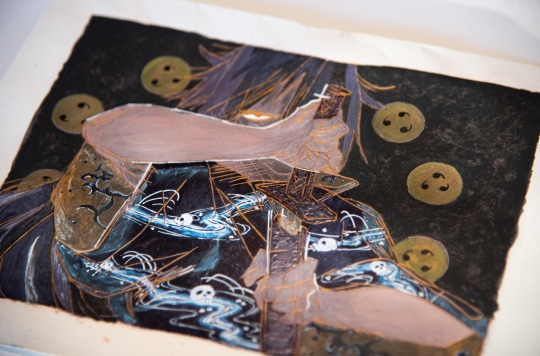
Another year, another outfit to die in! Happy birthday again Izuna!!!!!!
Like last year, I played with someone else's lines for these charming patterns, thank you so much Lena @elhnrt ! I had a ton of fun :D
Check the readmore for pattern references and explanations, there are some easter eggs in there :)
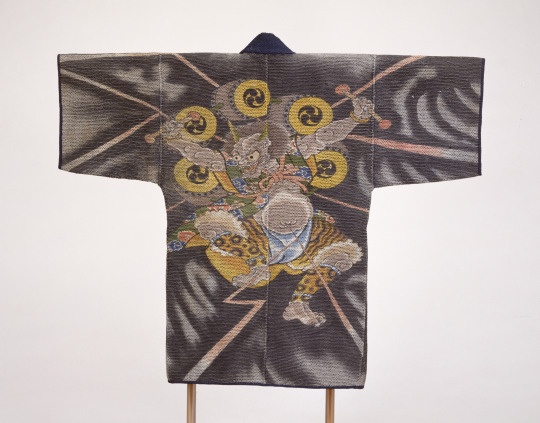
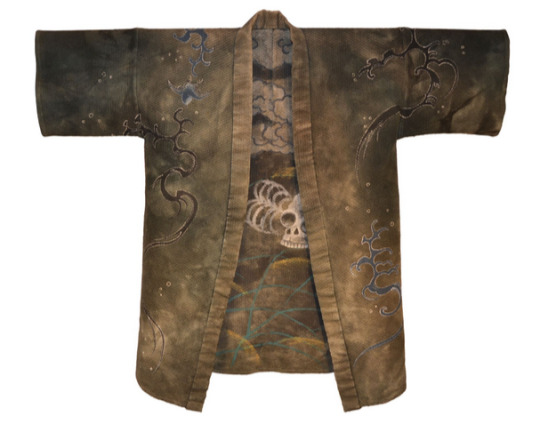

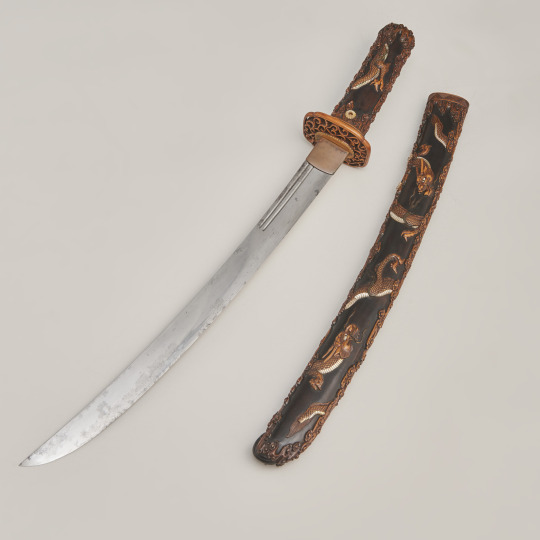
(x,x,x,x)
My goal for this piece, in addition to playing with patterns and textures and adding some Naruto references, was to add as many death flags as possible.
The idea of having Izuna in a fireman's coat is obviously not from me. I've always like the idea of Uchihas in fire resistant clothes, and the opportunity for a thick texture alongside a reversible double pattern is very appealing. I used the image of the second reference as a base, with skulls on one side and stylized lightning patterns on the other (visible inside the sleeves and collar). Both were common immagery of firemen coats.
The actual skull pattern is taken from the third reference. I'd seen this one before and before even learning anything abt it it was too beautiful to pass up. Those white and navy gradients are absolutely delightful and I enjoyed using my gel pens for them very much.... This particular type of imagery with skulls and bones in a field is called Nozarashi, inspired by Buddhist representation of death and transience.
The lightning pattern itself is a reference to water and lightning dragons :) Like Tobirama's iconic jutsu, it's one of the hints of what's abt to happen to our little guy. The scabbard is also decorated with dragon motifs for the same reason.
The background pattern is taken from the first reference, another fireman's coat with an illustration of Raijin, the thunder god. He is often representated with drums decorated with tomoes. It works nicely as a standard looking sharingan illustration, with a reference to Tobirama's hiraishingiris with the thunder imagery, like the thunder patterns inside the coat.
If you're interested in this I recommend the book linked in the second reference! It is entirely about skeleton motifs in japanese clothing of the early 20th century.
#mine#mixed#wip#naruto#uchiha izuna#been looking at some many fun patters I really went all in for this one#I love borrowing people's lines bc I do not care much abt anatomy or even drawing clothes tbh but patterns and textures....#it's like I'm dressing up a little doll :)#you can tell I was feeling myself seriousposting bc I capizalized the names...#anyway this was a lot of fun and of course actually quite unserious#for exemple you'll notice all these are either from late 19th/early20th c. despite the warring states era being obviously sengoku coded#later designs were easier for me to find references from and information on since I do not know much abt the subject#I allowed myself these liberties bc the timeline (wether aesthetic or narrative) in naruto is hardly strict#also it's usually the senjus who are associated with Buddhism and the uchiha are more shinto leaning but well.#you can tell yourself this is a sign of early konoha corruption on our guy Izuna#if you have any more questions abt this feel free to ask! this was a surprise again so i haven't posted any wips#but i do have some pictures of the process and I always love to chat
168 notes
·
View notes
Text
Black Myth: Wukong looks extremely beautiful and has some interesting mechanics. I will probably play it when it comes out. However, part of me is pained that we won't get the real Sun Wukong experience. (I think within the game this is absolutely justified, because there are hints that the monkey we will be playing isn't actually Sun Wukong.)
Why do I say this: The game is Dark Souls inspired, with extremely difficult fights which can nonetheless be won if you pay a lot of attention to how the enemy fights and get good at timing your attacks and the likes. But that is not how it works in Journey to the West. In Journey to the West Sun Wukong's opponents fall into three categories:
trivial enemies (there are many many enemies that he just kills first try)
evenly matched enemies (in those fights neither one can win by fighting, and they need to find a way around that problems)
enemies with a special trick (they defeat Wukong because of an artifact or the like that counters his powers, the challenge is to neutralize their advantage)
Remember, Sun Wukong is immortal several times over. The Dark Souls experience on the other hand is to die alot. (Yes, it is also a kind of immortality, but a different kind.)
So what I am saying is: If you turned Journey to the West into a game, it wouldn't be an action game. It would be a puzzle game.
#disclaimer: i have not read the novel so far only seen summaries of the early parts of it on youtube#but since it is an episodic story i feel confident that its tropes are established at that point#the game will be from what i have heard a 'dark take' on the original story#question is: does the team have enough understanding about buddhism to make an effective deconstruction of buddhism?#or will it be like good omens - a good story based on characters from a mythology that largely ignores the themes of the mythology?#guess we'll know next year#(but actually could i have the journey to the west puzzle game too?)#(maybe i should think about how that game would work - what kind of puzzle game it would be)#black myth wukong#journey to the west#sun wukong
16 notes
·
View notes
Text
One of the reasons I avoid a lot of “therapeutic resources” (including a lot of actual therapists ) is that so many of them, particularly those connected to workplaces, are very aggressive in actively personalising any individual client’s situation. I’m thinking statements such “don’t take what x person says personally”; “you can’t control what other people do, only how you “choose” to feel/respond”; the million shades of “you have to bring a positive mental attitude”/“stay positive”/“positive vibes only” etc etc. Not to mention the way capitalist corporate culture has co-opted mindfulness - you know, the spiritual practice of Buddhism, the explicitly anti-materialist religion - to cast the issue as those who are struggling with inadequate pay and ridiculous workloads rather than addressing the actual issues.
I see statements and practices such as these as an essential part of maintaining systemic marginalisation and oppression that is perpetrated by a significant part of the therapy industry. Making a client - and clients are inevitably more marginalised people because marginalisation a) means an intense amount of mental distress b) means experiencing constant sanction for the same behaviours that are tolerated or celebrated in privileged groups of people - continually focus inward on “managing their own response” to oppression and marginalisation is an active part of preventing those people from organising and campaigning to demand actual change.
And this is why they are so popular in those bits of the therapy industry most adjacent to corporate culture, as well as in influencer culture. They focus the issue on the person struggling - who is likely to be marginalised - and actively force them into a process of introspection, self-blame and self-gaslighting while actively forcing them away from community and workplace organising and activism. It has certain parallels with the practice of Roman Catholic confession; admittedly, that was an enforced practice for a big chunk of the world for millennia, and therapy is habitually sought out by a person themselves, but, given the culture of indulgences (formally in the late medieval/early modern period, but informally for a lot longer) meaning the same “sins” were almost invariably sanctioned far more harshly in poor and marginalised people, and the Roman Catholic Church frequently treating rebellion as actual heresy through the medieval and early modern periods, I feel there is at least some merit in the comparison.
(Please note I am neither anti-Christianity, specifically anti-confession as a religious practice, or anti-therapy. I am discussing ways certain practices have operated or currently do operate to reinforce structural oppression and marginalisation within current or historical contexts, and parallels between them. These say much more about how privilege operates to protect itself than anything else, as far as I am concerned.)
#early medieval#medieval#early modern history#therapy#mindfulness#cbt therapy#toxic positivity#socialism#trade unions#community organizing#roman catholic church#confession#indulgences#buddhism#marginalisation#oppression#history#disableism#capitalism
19 notes
·
View notes
Text
I hate hate hate hate art history (more specifically the class and not the subject) but goddamn does it not make me annoying as all hell. I see one (1) thing I learned about in class and go heehee I know that. The 8 hours per study guide need to be put to use somehow. Unfortunately last years class was just mainstream art history and now that I’m in global history and needing to learn about religious and cultural history on top of the actual the art I’m going to be so much more obnoxious.
#do you want to talk about different sects of Buddhism and how they influenced art symbolism in the early 1000s in the eastern world#what about yuan dynasty china’s usage of symbolism to express discontent with Mongolian rule#wabi cha? insular art and the mix of pagan and Christian symbolism? illuminated manuscripts? guanyin water moon form?#that’s too bad. i only know the bare minimum. and don’t want to talk about it.#& early-late mayan art and buildings. atlantids. brain full. no room for thoughts.
3 notes
·
View notes
Video
youtube
“But they love you”
Over and over, “They love you”
Thousands and thousands of eyes just like mine
Aching to find who they are
#今日の気分は#this got stuck in my head this morning because I was thinking about burn out lksjfdusofusa#I listened to this EP so much in...early 2019? I think? late 2018/early 2019#during the time period when I was writing Buddhism fic/two points of a triangle www#anyway. here you go. I gotta work on this book review for real for real#music#dodie
6 notes
·
View notes
Text

Abstract: This article combines contemporary work in social bibliography, translation theory and Buddhist studies to focus on two questions. First, what exactly does the act of “reading” sutras entail? And second, what is the precise relation between material sign and acoustic sound in Buddhist recitation? Answers to these questions are necessarily inextricably bound to local contexts and communities. The so-called ‘pictorial Heart Sutras’ (Jp: esetsu Shinkyō) of early modern Japan provide the particular aperture through which I pursue these queries. Following D. F. McKenzie, I understand the pictorial sutras “not simply as verbal
constructs but as social products” (1999: 127) which may be examined to reveal patterns of textual engagement, practices of translation and particular techniques for associating the quotidian world of rice paddies and rounded bellies with the abiding realm of religious doctrine. In particular, I argue that the pictorial sutras develop a “visual vernacular” whose lexicon evinces an abiding interest in fecundity and a belief in the apotropaic value of sutra reading.
#charlotte eubanks#reading by heart#translated buddhism and the pictorial heart sutras of early modern japan
0 notes
Text
Watch "Religion in the New Nation | US History to 1865 | Study Hall" on YouTube
youtube
#early America#us history#religion#christianity#mormonism#henry david thoreau#ralph waldo emerson#buddhism#slavery#racism#sexism#immigration#culture#Youtube
0 notes
Text
Your astrology reading for the 2022 Sagittarius new moon
Your astrology reading for the 2022 Sagittarius new moon
Yep, there’s another new moon. (It’s like these things happen every two weeks or something.) On Nov. 23 at 5:57 p.m. EST., the Sun and Moon will align in fire sign Sagittarius for the first and last time this year.
The good news: this new moon isn’t an eclipse, so you can freely meditate, visualize, light a candle, journal or do any other manifestation technique that you couldn’t do…
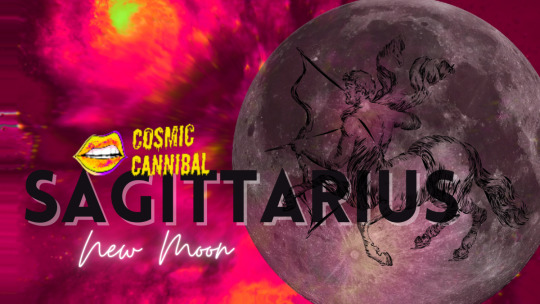
View On WordPress
#2022 astrology#2022 new moon#astrology#astrology reading#birth chart readings#black friday#buddhism#Cosmic Cannibal#early black friday deals#eclipse season#fire#horoscopes#journaling#manifest#manifestation techniques#mars#Mars Attacks#Mars square Neptune#meditation#mercury#mercury conjunct venus#Neptune#new moon#New Moon horoscope#sagittarius new moon#scripting#venus#yoga
0 notes
Text



‣‣ COR UNUM MASTERLIST | その時が来た

‣‣ Synopsis: A tale of how the Shogun's daughter ends up in the maw of one of the most fierce curse users to ever exist.

‣‣ Cross-posted on AO3
‣‣ Final Word Count: TBD
‣‣ Status: Ongoing
‣‣ Pairing: Sukuna x Reader
‣‣ Warnings: Blank blogs & Minors DNI. Dead Dove: Do Not Eat. Cannibalism, set in Early-Heian Period, trueform!Sukuna, mentions of Buddhism/religion in general, sexism, eventual smut, slowburn, dead bodies, descriptions of wounds, era-specific violence & views, dismemberment, female reader, reader is not a pushover, reader is the Shogun's daughter, reader knows how to use a sword, Sukuna is at the start of his reign as King of Curses, cursed spirits, body horror, each chapter will have its own warnings, warnings to be updated/added, not beta-read, sporadic updates.

‣‣ Part ONE — Tsukuyomi 月読
‣‣ Part TWO — Susanoo スサノオ
‣‣ Part THREE — Izanami イザナミ
‣‣ Part FOUR — Izanagi 伊邪那岐命
‣‣ Part FIVE — Kuraokami 闇龗
‣‣ Part SIX — Kuebiko 久延毘古
‣‣ Part SEVEN — Hachiman 八幡神
‣‣ Part EIGHT — Kagutsuchi カグツチ
‣‣ Part NINE — Kangiten 歓喜天
‣‣ Part TEN — Shinigami 死神
‣‣ Part ELEVEN — Tamonten 毘沙門天
‣‣ Part TWELVE — Daikokuten 大黒天
‣‣ Part THIRTEEN — Inari Ōkami 稲荷大神
‣‣ Part FOURTEEN — Yuki Onna 雪女
‣‣ Part FIFTEEN — Sugawara no Michizane 菅原道真
‣‣ Part SIXTEEN — Suijin 水神
‣‣ Part SEVENTEEN — Yomi 黄泉
‣‣ Part EIGHTEEN — Kōjin 三宝荒神
‣‣ Part NINETEEN — Toyouke 豊岡姫
‣‣ Part TWENTY — Amanozako 天逆毎
‣‣ Part TWENTY-ONE — Sarutahiko Ōkami 猿田彦大神
‣‣ Part TWENTY-TWO — Homusubi 火産霊
‣‣ Part TWENTY-THREE — Hanami 花見
‣‣ Future parts to be added.

#cw dark content#dead dove do not eat#sukuna x reader#sukuna x you#jjk x reader#will be updated with each chapter release#chapter banners are official game concept art from ghost of tsushima
1K notes
·
View notes
Text
South Asian and Hindu Influences in ATLA (Part 2)
disclaimer: i was raised culturally and religiously hindu, and though i've tried to do my research for this post and pair it with my own cultural knowledge, i'm not an expert on hinduism by any means. should i mess up, please let me know.
please also be aware that many of the concepts discussed in this post overlap heavily with religions such as buddhism and jainism, which might have different interpretations and representations. as i'm not from those religions or cultures, i don't want to speak on them, but if anyone with that knowledge wishes to add on, please feel free.
Part 1
In the previous post, I discussed some of the things ATLA got right in its depictions of desi and hindu cultures. unfortunately, they also got plenty of things wrong - often in ways that leaned towards racist caricatures - so let's break them down, starting with...
Guru Pathik
both the word "guru" and name "pathik" come from sanskrit. pathik means "traveler" or "he who knows the way" while guru is a term for a guide or mentor, similar to a teacher.
gurus were responsible for the very first education systems in ancient india, setting up institutions called gurukuls. students, referred to as disciples, would often spend years living with and learning from their gurus in these gurukuls, studying vedic and buddhist texts, philosophy, music and even martial arts.
however, their learning was not limited merely to academic study, as gurus were also responsible for guiding the spiritual evolution of their disciples. it was common for disciples to meditate, practice yoga, fast for days or weeks, and complete mundane household chores every day in order to instill them with self-discipline and help them achieve enlightenment and spiritual awareness. the relationship between a guru and his disciple was considered a sacred, holy bond, far exceeding that of a mere teacher and student.
aang's training with guru pathik mirrors some of these elements. similar to real gurus, pathik takes on the role of aang's spiritual mentor. he guides aang in unblocking his chakras and mastering the avatar state through meditation, fasting, and self-reflection - all of which are practices that would have likely been encouraged in disciples by their gurus.
pathik's design also takes inspiration from sadhus, holy men who renounced their worldly ties to follow a path of spiritual discipline. the guru's simple, nondescript clothing and hair are reflective of the ascetic lifestyle sadhus are expected to lead, giving up material belongings and desires in order to achieve spiritual enlightenment and, ultimately, liberation from the reincarnation cycle.
unfortunately, this is where the respectful references end because everything else about guru pathik was insensitive at best and stereotypical at worst.
it is extremely distasteful that the guru speaks with an overexaggerated indian accent, even though the iranian-indian actor who plays him has a naturally british accent. why not just hire an actual indian voice actor if the intention was to make pathik sound authentic? besides, i doubt authenticity was the sole intention, given that the purposeful distortion of indian accents was a common racist trope played for comedy in early 2000s children's media (see: phineas and ferb, diary of a wimpy kid, jessie... the list goes on).
furthermore, while pathik is presented a wise and respected figure within this episode, his next (and last) appearance in the show is entirely the opposite.

in the episode nightmares and daydreams, pathik appears in aang's nightmare with six hands, holding what appears to be a veena (a classical indian music instrument). this references the iconography of the hindu deity Saraswati, the goddess of wisdom and knowledge. the embodiment of divine enlightenment, learning, insight and truth, Saraswati is a member of the Tridevi (the female version of the Trimurti), one of the most respected and revered goddesses in the Hindu pantheon... and her likeness is used for a cheap laugh on a character who's already treated as a caricature.
that's bad enough on its own, but when you consider that guru pathik is the only explicitly south asian coded character in the entire show, it's downright insulting. for a show that took so many of its foundational concepts from south asia and hinduism and yet provided almost no desi representation in return, this is just rubbing salt in the wound.
Chakras
"chakra", meaning "circle" or "wheel of life" in sanskrit, refers to sources of energy found in the human body. chakra points are aligned along the spine, with energy flowing from the lowest to the highest point. the energy pooled at the lowest chakra is called kundalini, and the aim is to release this energy to the highest chakra in order to achieve spiritual enlightenment and consciousness.
the number of chakras varies in different religions, with buddhism referencing five chakras while hinduism has seven. atla draws from the latter influence, so let's take a look at the seven chakras:
Muladhara (the Root Chakra). located at the base of the spine, this chakra deals with our basest instincts and is linked to the element of earth.
Swadhisthana (the Sacral Chakra). located just below the navel, this chakra deals with emotional intensity and pleasure and is linked to the element of water.
Manipura (the Solar Plexus Chakra). located in the stomach, this chakra deals with willpower and self-acceptance and is linked to the element of fire.
Anahata (the Heart Chakra). located in the heart, this chakra deals with love, compassion and forgiveness and is linked to the element of air. in the show, this chakra is blocked by aang's grief over the loss of the air nomads, which is a nice elemental allusion.
Vishudda (the Throat Chakra). located at the base of the throat, this chakra deals with communication and honesty and is linked to the fifth classical element of space. the show calls this the Sound Chakra, though i'm unsure where they got that from.
Ajna (the Third Eye Chakra). located in the centre of the forehead, this chakra deals with spirituality and insight and is also linked to the element of space. the show calls it the Light Chakra, which is fairly close.
Sahasrara (the Crown Chakra). located at the very top of the head, this chakra deals with pure cosmic consciousness and is also linked to the element of space. it makes perfect sense that this would be the final chakra aang has to unblock in order to connect with the avatar spirit, since the crown chakra is meant to be the point of communion with one's deepest, truest self.
the show follows these associations and descriptions almost verbatim, and does a good job linking the individual chakras to their associated struggles in aang's arc.
Cosmic Energy
the idea of chakras is associated with the concept of shakti, which refers to the life-giving energy that flows throughout the universe and within every individual.
the idea of shakti is a fundamentally unifying one, stating that all living beings are connected to one another and the universe through the cosmic energy that flows through us all. this philosophy is referenced both in the swamp episode and in guru pathik telling aang that the greatest illusion in the world is that of separation - after all, how can there be any real separation when every life is sustained by the same force?
this is also why aang needing to let go of katara did not, as he mistakenly assumed, mean he had to stop loving her. rather, the point of shedding earthly attachment is to allow one to become more attuned to shakti, both within oneself and others. ironically, in letting go of katara and allowing himself to commune with the divine energy of the universe instead, aang would have been more connected to her - not less.
The Avatar State
according to hinduism, there are five classical elements known as pancha bhuta that form the foundations of all creation: air, water, earth, fire, and space/atmosphere.
obviously, atla borrows this concept in making a world entirely based on the four classical elements. but looking at how the avatar spirit is portrayed as a giant version of aang suspended in mid-air, far above the earth, it's possible that this could reference the fifth liminal element of space as well.
admittedly this might be a bit of a reach, but personally i find it a neat piece of worldbuilding that could further explain the power of the avatar. compared to anyone else who might be able to master only one element, mastering all five means having control of every building block of the world. this would allow the avatar to be far more attuned to the spiritual energy within the universe - and themselves - as a result, setting in motion the endless cycle of death and rebirth that would connect their soul even across lifetimes.
#atla#atla cultural influences#hinduism in atla#welp i thought this would be the last part but i ended up having more to talk about than i thought#so i'll save the book 3 inspirations for the next post#including my absolute favourite combustion man#and by favourite i mean kill it with fire why did you ever think this was okay to do writers
365 notes
·
View notes
Photo
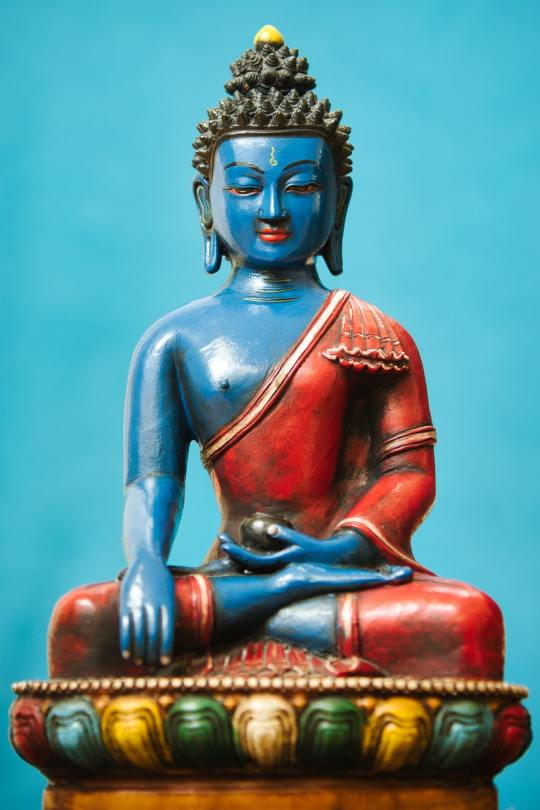
The Quest for Buddhism (81)
Threefold Training – 3 essential practices that the Buddha identified as cultivation
The Noble Eightfold Path (Ref) is often divided into three basic divisions. The three essential practices are ‘Moral virtue (Pali: sila)’, ‘Meditation, mind (Pali: samadhi)’, and ‘Insight, wisdom (Pali: panna)’.
Sila (higher virtue) means to uphold the precepts. Precepts are prohibitions, restraining evil actions of body and mind: (3) right speech, (4) right conduct, (5) right livelihood.
Samadhi (meditation, higher mind) means concentrating the mind and not allowing the mind to scatter. Samadhi means to calm the movements of the mind and unify the spirit: (6) right effort, (7) right attitude, (8) right samadhi.
Panna (higher wisdom) means to strive to attain the wisdom to know the Truth, to leave worldly desires behind: (1) right view, (2) right resolve (correct thought).
The three basic divisions of higher virtue, higer mind and higher wisdom complement each other and should be practised together.
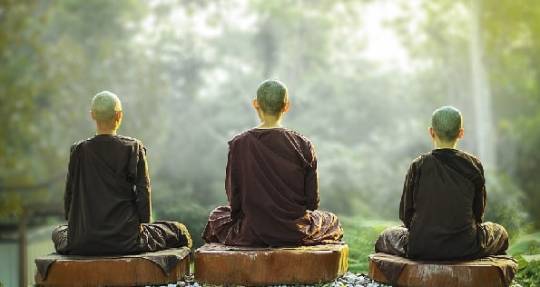
仏教の探求 (81)
三学 (さんがく) 〜 仏教徒必須の基本的な3つの修行項目
八正道 (はっしょうどう: 参照) は三学として、以下の3種類に分類可能である。すなわち戒学 (かいがく、巴: シーラ)、定学 (じようがく、巴: サマーディ)、慧学(えがく、巴: パニャー) をいう。
戒学は戒律を護持すること。戒は禁制の意味で,身心の悪い行を抑制すること: ③正しい言葉(正語)、④正しい行い(正業)、⑤正しい生活(正命)
定学は精神を集中して心を散乱させないこと。定は心の動きを静め,精神を統一すること: ⑥正しい努力(正精進)、⑦正しい心構え(正念)、⑧正しい三昧(正定)
慧学は煩悩を離れ真実を知る智慧を獲得するように努めること慧は理性により道理をありのままに悟ること: ①正しい見解(正見)、②正しい智慧(正思)
戒,定,慧の三学は互いに補い合って修すべきものであるとする。
#threefold training#noble eightfold path#buddhism#buddha#virtue#mind#wisdom#meditation#early buddhism#history#philosophy#nature#art
138 notes
·
View notes
Note
Third shelf, median book

Get Secret Doctrine'd lol.
This is my copy of Mme. Helena Blavatsky's The Secret Doctrine. This particular version is a two-volume 1977 reprint. This is the first of the two volumes.
A cornerstone of western Esotericism. Blavatsky lays out a sweeping, evocative pseudohistory in an attempt to syncretize and unify all human spirituality. Everything from holy texts to archeological evidence to folk tales are treated as evidence of a hidden true religion from which all spirituality branched.
It is difficult to describe the impact this text had on the English speaking world. In 1888, this was many readers first and only exposure to Buddhism and Hinduism. The theory that all religions shared a common "true" ancestor was not a new idea. What made Balavatsky unique was that she had actually been to southeast Asia, and she made clever use of ideas from popular contemporary novels to help sell her ideas. This text was an absolute bombshell for a certain type of guy in 1888.
It's influence on western history is bizarre and --in my opinion-- under-discussed. It's shadow can be seen in everything from authors like Arthur Conan Doyle, and Lovecraft, to painters like Kandinsky and Mondrian, to the early Nazi party.
The text did not spark interest in eastern religion, but it was gasoline for the fire. It set up Theosophy to be an umbrella mythology, which combined several disparate popular myths and ideas into a single, cohesive system.
450 notes
·
View notes
Text

Thank you for leaving these tags @pharawee! Without getting into any speculation about how Dead Friend Forever will actually end, I do want to address your question and talk about why most of us want to see severe consequences for these boys. The short answer: it's about genre expectations and the psychological catharsis of a good revenge narrative.
To get down to the really basic point: people who love revenge thrillers love them because they are a fantasy construct in which good people survive and bad people get what they deserve. In a world where bad things happen and we rarely have any control, a good revenge story can be exhilarating, giving you the feeling that justice prevailed, villains received appropriate comeuppance for their wrongs, and the protagonist seized control back and experienced much needed catharsis for their suffering. Real life is very much not like this, which is why it's such an appealing genre of fiction.
So how do we calibrate what "appropriate comeuppance" means? This is where genre expectations become really important, because the genre the revenge narrative plays out in sets the terms for where that bar sits. In The Glory, a recent world class revenge drama, we were in the psychological thriller genre, so revenge came in the form of Dong Eun playing mind games with her bullies until they destroyed their own lives. No murder necessary. Dead Friend Forever, however, is in the horror genre, and specifically began its story by planting itself in the slasher subgenre, giving us a masked killer and setting up expectations that these boys are being hunted. When you watch a slasher, you come in with the mindset that most of the characters are going to die and begin rooting for it and looking for reasons why they "deserve" it. And typically, in a slasher, it takes very little for a character to "deserve" a death--you often see people die for the tiniest infractions, like making a rude comment, telling a bad joke, or having sex. But DFF went much farther than that and gave us a multi episode flashback in which we got a detailed accounting of every wrong this group of boys committed against Non, increasing the audience's bloodlust and conviction that these boys needed to pay.
So why do so many of us want the bullies to die? Because the genre demands it, and the story set the audience up to expect it from the outset. I have seen some discussion of the way the show is blending different horror subgenres and not sticking strictly to typical slasher conventions, and that's true, and expected. Slashers are usually two hours max, and this show needed to fill 10+ hours of content, so it's doing a really interesting blend of slasher, mystery, psychological thriller, and other horror subgenres. But the bones of the story still hold, and despite the storytelling choice to give the villains some nuance and fleshed out motivations for their behavior, they are still villains who destroyed Non's life. If you're feeling overly sympathetic to any of these boys at present, I encourage you to go back and remind yourself how they behaved in the early episodes of this story, which took place after the events of the flashbacks. These are not genuinely remorseful kids who made minor mistakes and then got their acts together and became upstanding citizens; they just want to move on and avoid blame and accountability for what they did, while Non's entire family was irrevocably destroyed by their actions.
If this story ends without Por, Tee, Top, Fluke, Jin, and Phee suffering genre appropriate consequences for their choices that harmed and betrayed Non, it will be a letdown and many will feel unsatisfied. In real life, we may believe that forgiveness is the right path, and we know that Buddhism teaches unconditional forgiveness. But this is not real life. This is a fantasy genre that is specifically meant to provide an escape from the constraints of real life morality and obligations. No one wants to show up to a fantasy party only to receive a moral scolding. The most disappointing thing a revenge narrative can do is wimp out on delivering the actual revenge.
#hope this helps!#i think folks coming to this show mostly from a bl lens and not grounded in horror genre might have a harder time with this#dead friend forever#dff the series#shan shouts into the void#thai bl
156 notes
·
View notes
Text
The Iconoclast: Appendix
This is the appendix for my fic The Iconoclast, in which I will discuss some of my cultural and historical inspirations for the worldbuilding.
Disclaimer: I'm certainly not an expert on or practitioner of all the cultures I took inspiration from. In outlining my influences I hope to show my admiration and give appropriate credit to them.
Contents
Intro
Religion
Martial culture
Talent show
Miscellaneous
The Iconoclast is set in the same world as ATLA, about 800 years before the era of the cartoon. I was inspired by 10th-11th century societies; the Fire Nation is inspired by the Khmer empire, Kyoshi Island is inspired by Heian period Japan, and so on. Of course, the aesthetics of Hari Bulkan are heavily inspired by Angkor—Virtual Angkor was a huge help in visualising the city.

The immense population of Angkor was sustained by intricate water management techniques. The Khmer built reservoirs to collect water and sustain agriculture through the dry season. However, the impressive structures of Angkor had a dark side: they were built by enslaved labourers. Enslaved labour was extracted through human trafficking and debt bondage. In The Iconoclast, I integrated the institution of slavery with the caste system.
The exception to my adherence to periodisation was in the Inuit traditions that inspired the Southern Water Tribe, as the 10th-11th centuries appear to have been a period of migration eastwards across the Arctic for Inuit people. In addition to this, periodisation in Inuit history is more difficult to reconstruct due to the colonial destruction of knowledge. As a result, I took broader inspiration from pre-colonial Inuit culture.
Religion
The Fire Nation is based on the Khmer empire, which in this period adhered to Hinduism before the uptake of Buddhism. The cult of the Devaraja (lit. “god-king” in Sanskrit) arises from the specifically Southeast Asian branch of Hinduism. The Devaraja is regarded as the avatar (in this case, a human incarnation) of Vishnu. The Khmer king was marked out by dress: he wore a golden crown, or a wreath of flowers. His palms and the soles of his feet were stained red. He wore a sampot patterned all over with flowers—the more flowers, the higher the status.
I conceptualised Zuko as being seen as an incarnation of the sun. Following Hinduism, this would be Surya. Fanon tends to use “Agni”, in fact the god of fire. Either way, as a non-practitioner of this religion, I’ve personally avoided using gods still worshipped today in my worldbuilding. My inspiration has largely been in the philosophy of religion.
Such philosophical ideas include: dharma, avatara, ahimsa, and brahman vs. atman. I found the Bhagavad Gita highly informative in developing these concepts—themselves debated in Hinduism—as well as ideas about the dilemma of Arjuna and the imagery associated with Krishna. I had an enlightening conversation with my friend Tana, who convinced me of the need to address the legacy of caste and casteism arising from the text. Ideas of caste carry certain baggage in the western world that I wanted to pare back, hence the differing terminologies of “in-” and “out-caste” used in The Iconoclast.
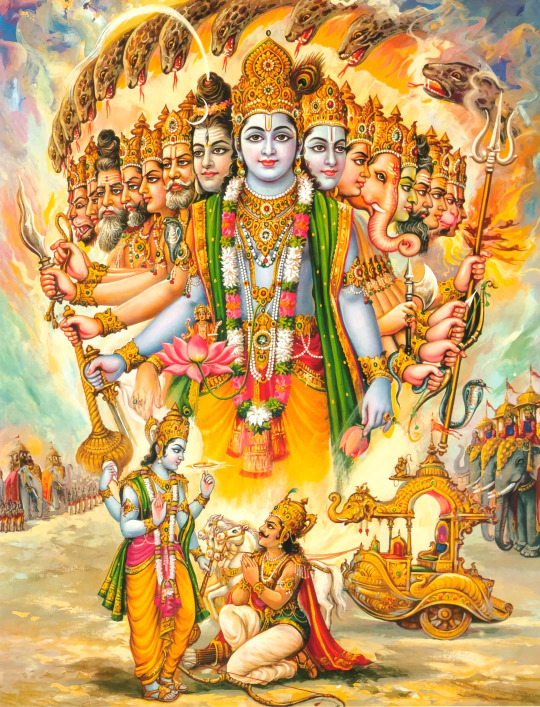
The philosophies of Hinduism overlap with and develop in slightly different ways in Buddhism, which I explored through Choden. One instance is the Hindu notion of the Chakravarti, an ideal universal emperor (lit. “the one whose wheels are turning” in Sanskrit). A non-secular Chakravarti would in fact be a Buddha, someone who has reached enlightenment. Since Choden is the one who introduces this concept, I used the more literal term “the Turner of the Wheel” to disambiguate from “Buddha” (which immediately draws certain connotations), and also to draw a more direct relationship between the Arjuna imagery associated with Zuko.
This religious worldview stands in contrast to animism of pre-/early Shinto Japanese religion and Inuit spirituality, as reflected by Suki and Sokka. Princess Mononoke was in fact a huge inspiration! I conceived of the kami in the context of Shintoism before the major influence of Buddhism; Suki also worships at a kamidana shelf.

For the Inuit, all things have anirniq, “breath/soul”, which lingers even after death. Therein lies the tension: between the need to hunt for survival and the vengeful soul that the act of killing liberates. The website I used as my source has a great quote on this: “the great peril of our existence lies in the fact that our diet consists entirely of souls.” These souls must be placated through ritual and observance of taboo.
Importantly, I was interested in how each practitioner of religion approaches that philosophy in their individual ways, so none of the characters are perfect “representatives” of an ideal embodiment of that religion. Zuko is wary of his god status. Choden’s obsession with Zuko as Chakravarti makes her an outlier among the airbenders. Sokka trusts his “material” technologies of survival (i.e. weaponry) over spirituality, even though he practises the rites still, such as the smearing of lampblack and ritual words.
Martial culture
Sokka’s weapons generally mirror the ones he had in the show, with some additional embellishment. The snow knife is used to cut snow, but applied into a martial context by Sokka. The metal is sourced from a meteorite and cold forged; my inspiration was the Cape York meteorite, which Greenlandic Inuit used to fashion tools. Sokka’s club is made of jawbone, the strongest bone and stronger still from a herbivore. I combined the caribou and wombat into the “caribombat” for this, a nod to both an important Arctic animal to Inuit culture and to Sokka’s antipodean roots.
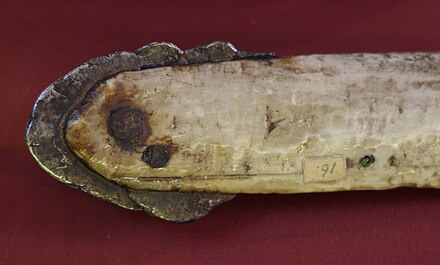
Suki is based on early samurai. She uses the fans from the show, but instead of the katana (which we see her wield in “Appa’s Lost Days”) she uses a tanto, which is a kind of predecessor of the katana and can be used as an offhand blade or a weapon in its own right. Women could also carry a smaller version of this blade for self defence. Her armour is Heian period do-maru armour, which was a lighter development on older styles of armour, made of scales of lacquered leather. I was particularly in love with the idea of her having a helmet and a men-yoroi mask, which was used as facial armour.

Zuko’s fighting style is inspired by bokator, a Khmer boxing style. He uses the short sticks instead of the dual dao, which can become truly dynamic weapons!
Talent show
Suki’s performances are based on the Japanese tea ceremony and bianlian from Sichuanese opera. The preparation method of the Japanese tea ceremony—whisking powdered tea—is in fact borrowed from the Chinese Song dynasty, which fits the time period of the world. Bianlian involves a performer very quickly changing a series of masks to a secret technique. It’s way more fun to watch on video than to read, I admit!
Osha’s dance is… meant to be the royal Cambodian ballet. The dance evokes the apsaras, dancing celestial beings in Hindu culture (incidentally, they are depicted on the walls of the fire temple on Full Moon Island). And just like western ballet, it takes years of training and skill to master!
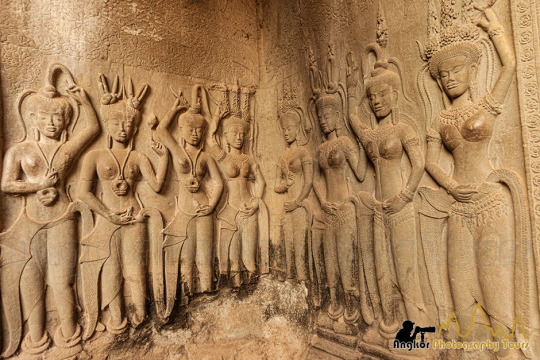
Miscellaneous
Druk is, in this conception, a naga instead of… whatever unholy mix of cultures’ dragons LoK drew him as. Nagas are found across South and Southeast Asian cultures, and in Khmer culture they are typically represented as serpents—sometimes with multiple heads. They are associated with water, prosperity, and various other positive connotations. There’s a whole rabbit hole I don’t really want to get into about why I’m putting a water-associated creature in the Fire Nation (East Asian dragons are associated with water too!) but I do want to point out that there is a natural phenomenon on the Mekong called “naga fireballs” so… I’m running with that.
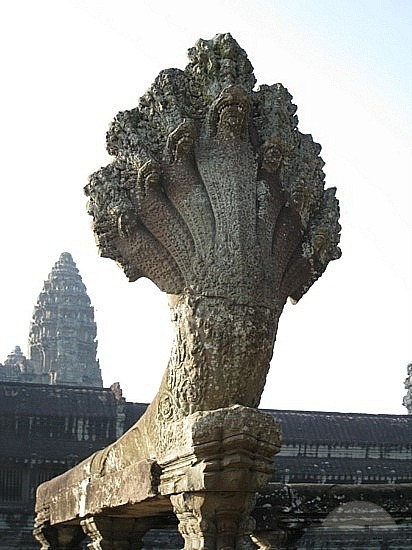
Full Moon Island is Crescent Island… before the eruption that turned it into a caldera.
Osha’s name is not a health and safety pun; I’m not American and I call it WH&S, it was a total coincidence. It means “shining” in Sanskrit—apt for a Fire Nation character, I think.
And finally… Mo Liudou’s name is a Cantonese joke! 冇料到 means “lacking results”. And the place where he comes from, “Mo Gwaiyong” (冇鬼用), means “no bloody use”. So he's Lacking Results from No Bloody Use.
#read chapter 5 first!#zukki dp wip#atla#my fic#yeah ok i know im a nerd no one @ me#putting my 2 ancient history degrees to good use
185 notes
·
View notes
Text
Comics mini-Comints: Dungeon Meshi
reread dungeon meshi through to the end. still such a great manga. here are immediate thoughts - if I end up having time and energy I hope I can write something that goes deeper!
ironically i was only a few chapters from the end when I stopped keeping up, but I was struggling to remember all the characters and context, so reading it through in one go was definitely an ideal way to achieve maximum impact there.
ryoko kui does a very elegant job of handling a transition from 'silly antics' to 'big dramatic fantasy' while still keeping the central thematic throughline - eating and being eaten, belonging to an ecosystem, the significance of sacrificing others to achieve your own desires. a lot of setups pay off in a way that feels meticulously planned - and of course the crux of the final showdown revolves around characters attempting to eat each other, of course the big payoff is a huge feast that symbolically unites all the conflicting factions. it is maybe a bit too neat and happy for my taste, but it's undeniably tightly executed - it never loses sight of what it's about. especially compared to something like Frieren, it's an incredibly coherent serialisation, up there with e.g. Fullmetal Alchemist.
kui's art style deserves all kinds of praise - it feels effortlessly simple, but it clearly communicates all sorts of different shapes and body types and it's really fun to see her play around with remixing the different visual elements when she switches the races around. in general Laius's autistic monster loving ways clearly reflect kui's own deeply felt appreciation for all the ways people and animals live (accentuated further by all the extra sketches the scanlators tuck in). in a way you could kinda call it like Parts Unknown the fantasy manga.
the stakes of the final conflict are interesting - there is much to be said about the framing of 'desire' and its fulfilment, of this occult idea of 'the infinite'. lots you could put in relation to other manga, and also buddhism. (in particular I really want to develop a comparison to Made In Abyss, there are so many parallels, it just might be too spicy for tumblr lmao).
one thing I really like about it is how much its fantasy dungeon-exploring setting owes to D&D and other TTRPGs, rather than videogames. monster ecology has been a fascination of that game since the early days of Dragon magazine, and Kui sharply zeroes in on some of the intrinsic conflicts baked in to that fantasy milieu, notably the lifespan thing, while smartly avoiding the traps of 'evil races'. there's some really fun nods to the weirder monster manual entries. and in a story with so many characters and factions, it does a genuinely incredible job of furnishing everyone with understandable, reasonable motivations, conflicts drawn from their context just like the monsters are explained by their ecology.
and one thing that I particularly appreciate is like... how much it is able to simultaneously understand and sympathise with a character and also show us how and why they'd rub others the wrong way. it's impossible not to like our main group, they're all such charming dorks and the manga leads you along with all the crazy rpg party shit they do, but at the same time you definitely find yourself thinking 'guy's got a point' in the kabru chapters lmao. I'm projecting hard bc i don't really know a thing about ryōko kui but laius def feels like the sort of depiction of having an autism that you can only do if you've lived it.
but yeah, it's a fuzzy ending where it all turns out well. but what's the deeper thrust of it all? there's a funny moment where marcille is like 'maybe in the end our journey is about learning to accept death' and the grouchy old gnome guy completely laughs this off as naive, because death doesn't mean anything. and indeed their big plan pays off, and falin does indeed come back just fine. but still, through all of this it asks you to bite the bullet that being a living creature means eating to survive, at the cost of other creatures, with the other side being that one day you too will be eaten. in contrast to this honest way of being is the beguiling fantasy of infinity, where all your desires are immediately fulfilled - this is shown as a dangerous path of corruption that produces madness and manipulability. having limits and rubbing up against the wishes of others, or 'doing things you don't want to do' as izutsumi's arc puts it, becomes necessary for having some kind of definition as a subject. the thing that makes the demon concrete as an entity is a desire, or appetite, that can't immediately be fulfilled.
of course we can connect this to the idea of narrative conflict. a standard advice for putting together a plot is to ask what each character wants and why they can't get it. wanting something implies movement. and indeed over the course of this story, we see that while having too many desires fulfilled too readily leads to incoherence and callousness, equally a character who is left catatonic as their desires have been eaten by the demon must be reawakened to activity by finding a new desire.
it's kinda Buddhist innit. neither the opulence of the palace nor asceticism. desires are what tie you to the world. but mixed with ecology: what a creature does to find the energy to live is what defines its lifestyle, its form.
this is probably where I'd start talking about entropy gradients and shit if i wasn't typing this on a phone at 1:30am lmao.
but yeah - it's a powerful move to go from 'D&D monster recipe show sendup' to 'living with the inherently violent nature of being an organism fated to live in a finite sum game' and yet Dungeon Meshi makes it feel natural and convincing, while remaining tremendously charming and funny throughout. ryōko kui is definitely some kind of genius, and I can't wait to see what her next act is gonna be. it's all definitely making me appreciate the act of eating a lot more.
next story on my plate is probably The Flower That Bloomed Nowhere, which sounds like it will present a very gnarly thematic contrast.
173 notes
·
View notes